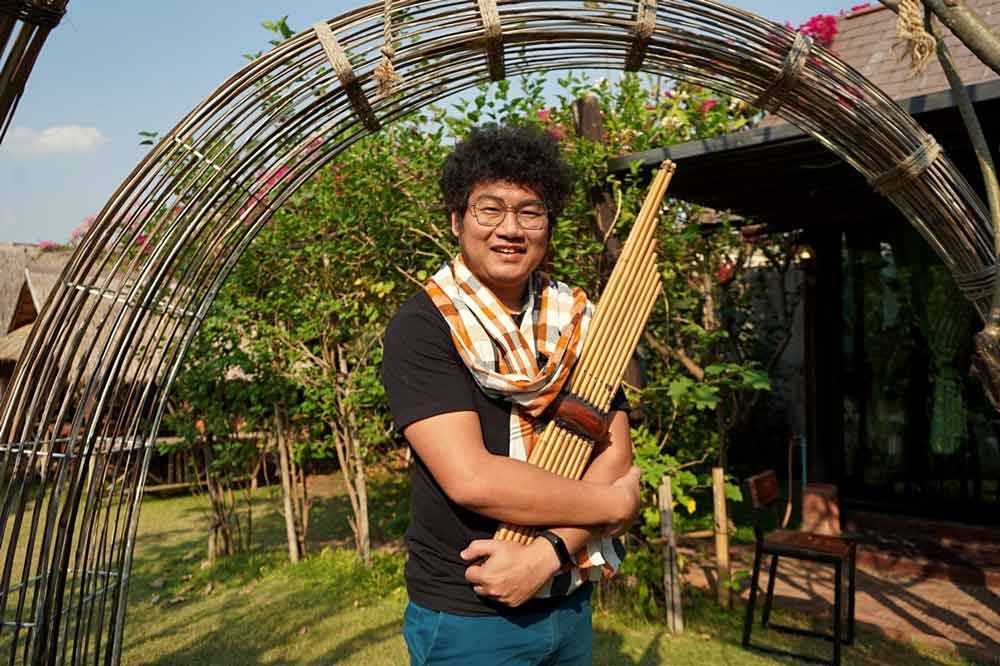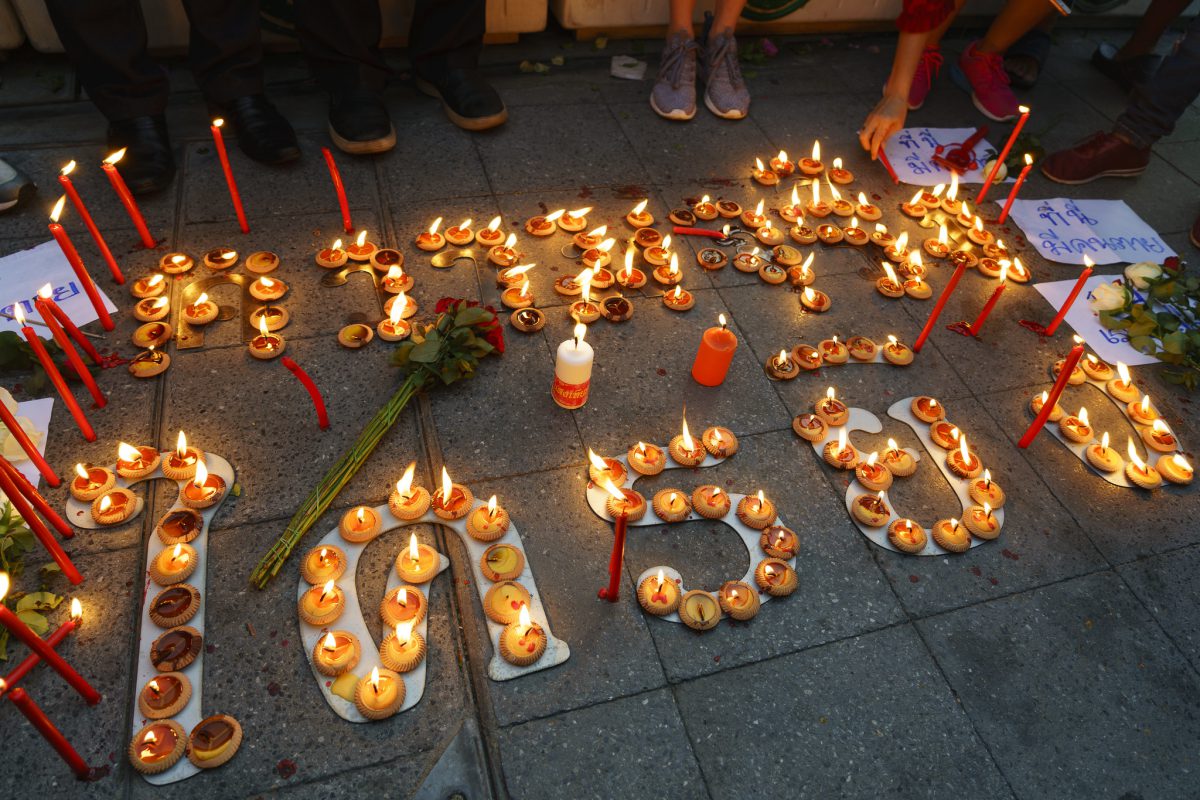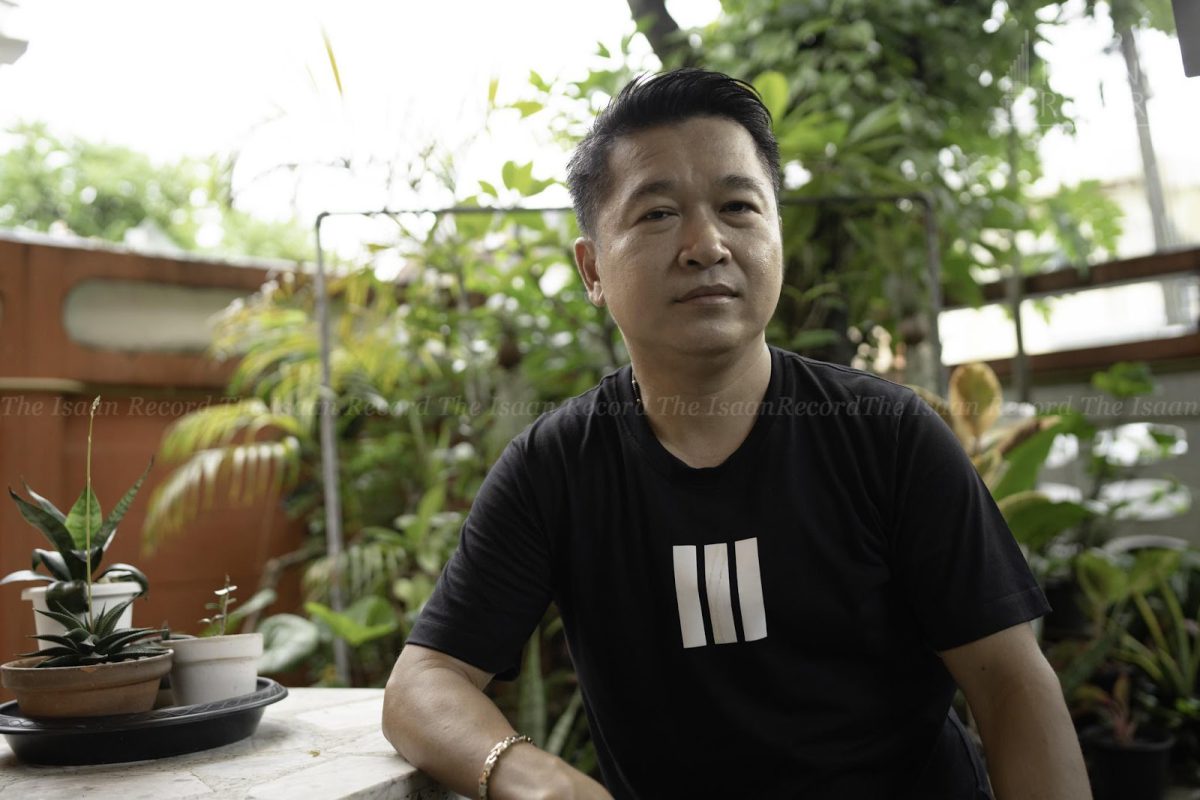
Fifteen years ago, a group of classmates from the Kalasin College of Dramatic Arts made history by taking the molam sound of temple fairs and village festivals to the giant stage of Bangkok’s Impact Arena. The band’s unique musical mash-up brought together traditional Isaan music and performances with more modern and international styles.
The Isaan Record’s Yodsapon Kerdviboon took a trip to Chaiyaphum to talk to former band member Thawit Sitthongsi about the troupe’s reputation as a leader in changing contemporary molam music and molam performances forever.

Thawit Sitthongsi is a former member of Pong Lang Sa On. He is also known by his stage name “Nao Pong Lang Sa On”.
The Isaan Record (IR): We were told that Pong Lang Sa On imploded. Is that true?
Thawit Sitthongsi (TS): Pong Lang Sa On did not implode. The only reason for us to implode would have been because I flirted too much with a dancer backstage and ended up marring her (laughs).
The truth is we did not break up but our members went down different paths to pursue their careers. We have been molam performers for many years since, ever since we were 16, 17 years old. Now we are between 25 to30. So we had a discussion and decided that it was time to go our own ways because some band members didn’t want to do this job for the rest of their lives. We agreed that whoever wanted to continue could do so and those that didn’t could do something else.
I myself began teaching folk music at a secondary school in Isaan, but I quit shortly after because I wanted to develop myself. I took up a master degree course on culture at Khon Kaen University and continued on to do a Ph.D. on culture because my goal was to do academic work on Isaan folk culture.
IR: In what form does Pong Lang Sa On still exist as a band?
TS: The band’s main work now is to be a backup band on television shows on the Workpoint channel. There are also gigs at Tawandang German Brewery in Chaeng Wattana every Wednesday and Sunday.

The full crew of Pong Lang Sa On after a show (undated file photo from Thawit Sitthongsi)
IR: Can you tell us about how popular Pong Lang Sa On was in the past?
TS: On Pong Lang Sa On’s popularity–there are 31 days in a month, right? Pong Lang Sa On used to play about 45 shows a month, so you can see how busy we were (laughs). On some days we had two to three shows. We were very famous.
We ate, slept, and dressed in the van. The van was like our home when we travelled around the country. For example, we finished a show in Kalasin in Isaan, then we travelled to Sukhothai in the central region, then on to Trang in the South. For me, those times were the peak of our fame, the highpoint of the peak.
IR: You even played in the Impact Arena in Bangkok where usually only international acts and big Thai artists perform, right?
TS: Yes, we got the chance to perform at the Impact Arena [in 2007] because there were sponsors who wanted to introduce local Isaan folk culture to the whole nation and also to foreigners. Playing there was the turning point for the band because we were well known after that, which led to some strange things.
We were hired to perform in Bangkok clubs for partygoers and tourists who would dance to our local Isaan music, something that never happened before because nightclubs are usually for more mainstream music.
I remembered I was surprised and I asked the band leader how we could play molam at a club. He said, “Yeah, we’ll adjust the performance, bring along our local instruments, and combine them with other instruments.” So we adjusted the keys to other instruments and adapted the live performance on the stage to be more in line with a club audience.

Pong Lang Sa On on stage at Impact Arena in Bangkok as part of the show “Amazing Thailand” in 2007. Photo: RS
IR: What do you think made Pong Lang Sa On’s shows attractive for a non-Isaan audience?
TS: I think it was about taking local Isaan music, the folk Lao-Isaan melodies, changing the keys and the tunes to fit in with international music, western instruments, and melodies. It created a new composition and rendition of Isaan molam while retaining the traditional Lao-Isaan vibe and lyrics. So it became enjoyable not only for Isaan people, but for foreigners, too.
IR: You performed for audiences who had never really listened to molam before. Did you make any adjustments in the show?
TS: Adjusting shows to the audience in each region was important, even though the audiences were of all ages. There were the elderly, the young, and the teens so performances had to be different in order for them to enjoy the show. We adjusted the traditional molam to the character of each region. Another outstanding aspect was our comedy and parodies of advertisements. We adjusted our performances and were flexible as much as we could.
IR: Would you say that the success of Pong Lang Sa On was a turning point for contemporary Isaan molam?
TS: Yes, back then, 10, 15 years ago, Pong Lang Sa On changed traditional Isaan music performance, or molam music because our shows and live performances of the local music were not only recorded on tape but also distributed on the internet. It was the early days of online media that helped bring our performances to the world. We wanted to present local Isaan culture and music to the world so that foreigners would see what Isaan music could do.

Tawit Sitthongsri (left) playing the flute as band leader Id Pong Lang Sa On (middle) looked on.
IR: Did you ever feel strange playing Isaan molam for people in Bangkok where this type of music used to be dismissed as music for country bumpkins ?
TS: No, never. We wanted [instead] to push the Lao-ness that some people often looked down upon, calling us ai lao, bak lao or hillbillies. We wanted to develop this country-ness to become something of a drawing card. We wanted to take this identity and bring it to the world to show that there is more to local Isaan art than people thought. We envisioned that molam and Isaan folk culture could bring changes to the music industry in Isaan, Thailand, and the world.
IR: When you look at Thailand’s molam scene today, do you see Pong Lang Sa On’s legacy?
TS: Today, many molam bands and artists are determined to present molam in their own ways, which is not the old way. There is a mix of many styles of music in their performances. There is also online media for them to present their work. The bands and artists can show their songs and music online or on Facebook and they can rise to fame in no time.

Thawit says the band’s purpose was to push Lao-ness through a mash-up of Isaan molam and modern music.
Lyrics nowadays talk about the contemporary Isaan life, but the music and lyrics about the lifestyle might not have changed much. Isaan artists write about Isaan life with the fields, the rice paddies, and the tadpoles. They use the folk Isaan way of talking [making words up out of rhyming sounds]. It gets put into the lyrics, which is put into modern instrumentation. It’s all mixed up together, and new music is born. You’ve got Isaan rap nowadays, and all kinds of other stuff. But the molam hasn’t been thrown out.
I think that artists presenting themselves as just themselves is a good thing. But we have to think about what the old Isaan music teachers taught us about melodies and music that might not be appropriate or too direct. I think the old-style molam and the old lyrics can be mixed with contemporary styles. Taking old molam and fusing it with new tunes and melodies will make molam survive.





